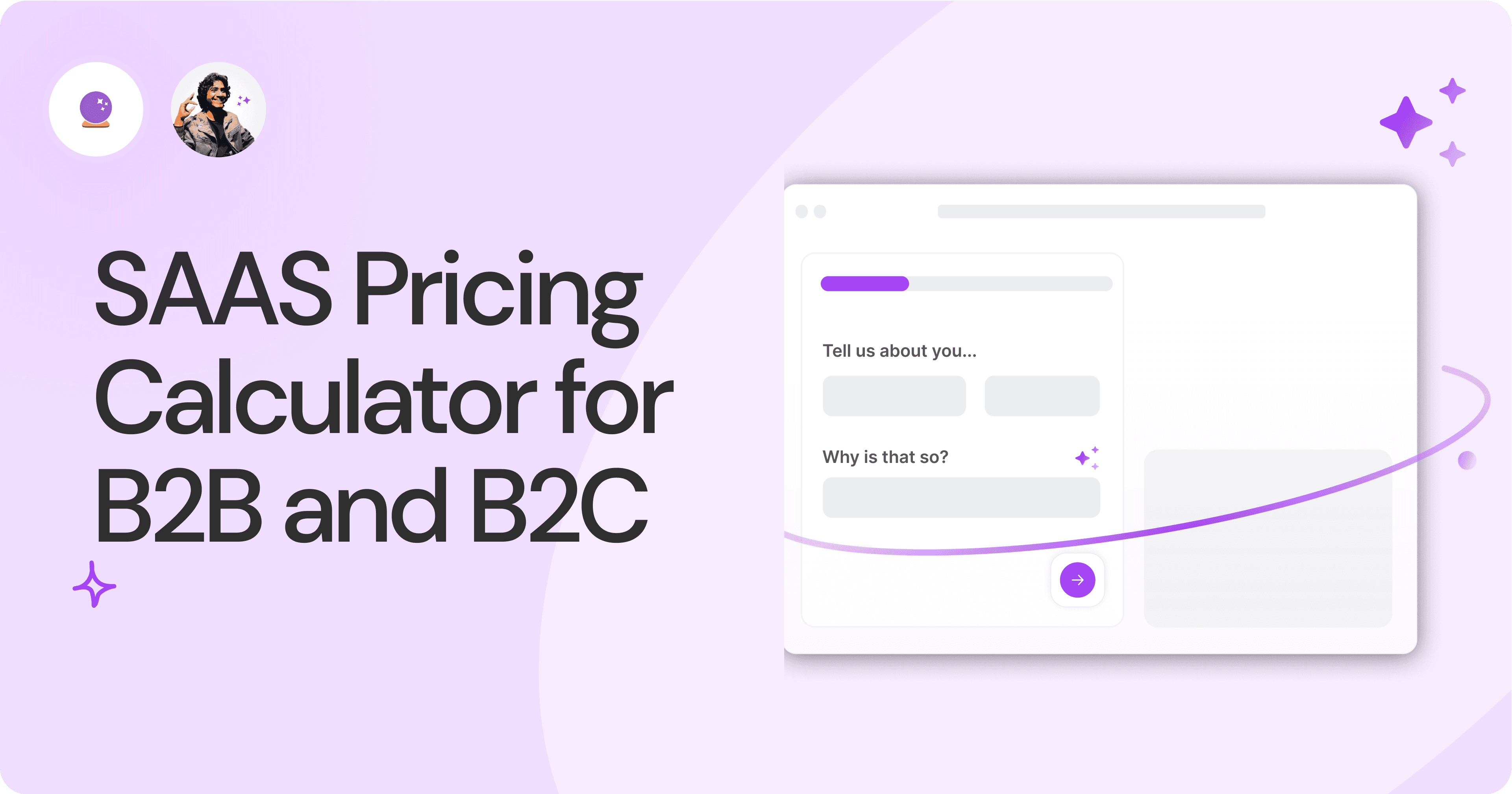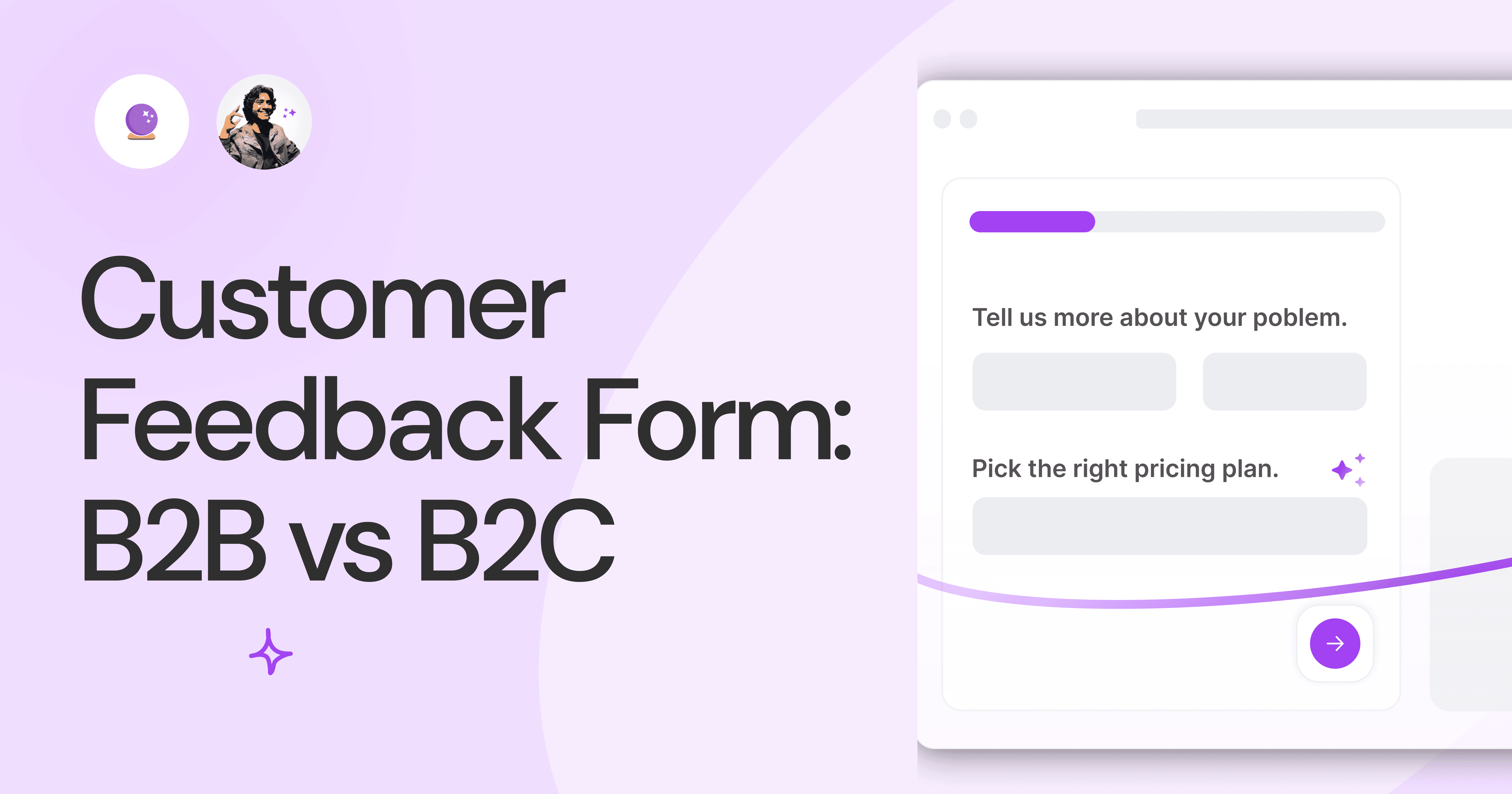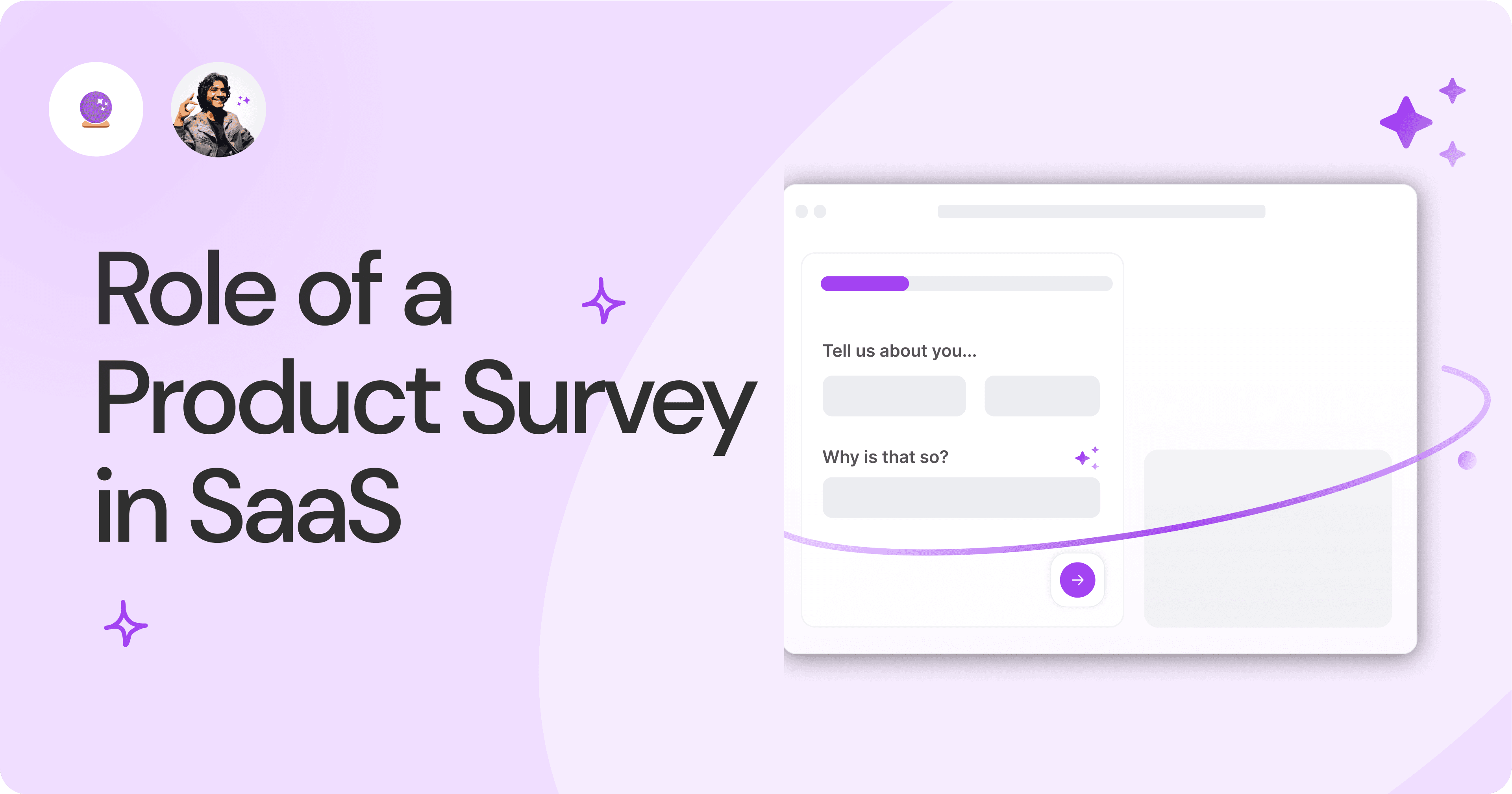Best Practices to Follow for Reliable Survey Data Collection
Best Practices to Follow for Reliable Survey Data Collection
Best Practices to Follow for Reliable Survey Data Collection
Discover the 6 best practices for survey data collection to ensure reliable results. Know how to design, distribute, and analyze surveys for accurate insights.
Discover the 6 best practices for survey data collection to ensure reliable results. Know how to design, distribute, and analyze surveys for accurate insights.
Discover the 6 best practices for survey data collection to ensure reliable results. Know how to design, distribute, and analyze surveys for accurate insights.



"Without data, you're just another person with an opinion." - W. Edwards Deming
Collecting and analyzing data to understand audiences, target markets, measure performance, and make informed decisions can be a game changer for any business in the current times. Surveys, in this regard, are a great tool to gather valuable insights, feedback and more from customers and other stakeholders.
Whether you’re a startup or a small business looking to identify your target market or a large company conducting employee surveys, the data you collect from the survey can significantly impact your decision making process. However, the reliability of the data is important or else it can lead to confusion.
So, in order to get the actionable information you need, it is recommended to follow the best practices for survey design. This piece will help you understand what survey data collection is along with a few guidelines that you should follow to produce valuable results!
What is Survey Data Collection?
Survey data collection is the systematic process of collecting data from a specific group of people often with the help of questionnaires or surveys. This process is conducted to gather valuable insights, opinions or other data points from a set of targeted audiences. The particular process involves several steps namely:
Designing surveys
Selecting appropriate methodologies to collect data(online, in-person etc.)
Distributing them to intended participants
Collecting survey responses
Analyzing the gathered data to for meaningful insights
Did you know: Platforms like Metaforms allow for the creation and customization of your data collection forms. You can then share them with your target audience and once you have the survey results, you can analyze for valuable and powerful insights!
6 Best Practices For Survey Data Collection
Whether you’re planning your first ever event or collecting customer feedback, these survey tips and best practices will help you create effective survey forms and ensure that your data is accurate.
Define a Clear Objective For Your Survey
A clear objective establishes what you want to achieve with your survey. For instance, let’s consider a scenario where you're trying to increase sales for a particular product line and you want to understand why it hasn't been picked up well in the market yet. Instead of framing a generic goal like - "I want to find out the reason for low sales performance," try to be more specific - "I want to identify the key factors that are leading our customers to not purchasing our product”. This could either be due to product pricing, lack of product market fit, product features, or lack of awareness.
A clear goal in mind helps frame your questions in the right manner and ensures you collect useful information.
Additional Tip: If you’re uncertain about what questions to ask, you might try AI powered survey platforms like Metaform to get actionable insights.
Target the Right Audience
It is important that your survey reaches only those who fit your desired interest group. This implies that you should focus on one of two types of groups - a specific audience or a representative sample. A specific audience are people from whom you're directly seeking information, such as customers while a representative sample is a group of individuals who fit specific criteria of your set objectives and represent your target audience.
By asking the right audience, you can be sure that the responses are directly related to your set research objectives.
Keep Questions Straightforward
Don’t let your survey get too long by asking leading questions or two or more questions combined into one. Try to use simple language and remember your objective for the survey at all times.
This approach will not only lead to increasing completion rates of the survey data collection process but also more thoughtful answers from your respondents. Moreover, what better way to respect their time by keeping the survey to the point.
Balance Your Answer Choices
Keep your answer choices balanced to ensure the reliability of survey data collection results. For instance, how likely or unlikely are you to recommend our service to a friend?
The range of balanced options could be:
Very likely
Likely
Unlikely
Very unlikely
On the other hand, an unbalanced set of answered choices could look like this:
Very likely
Likely
Somewhat likely
Neutral
So, in the second set of options there is no clear choice for respondents who might feel "unlikely" or "very unlikely" to agree with the given questions. This might result in respondents providing vague feedback.
Review and Proofread Your Survey Thoroughly
Imagine sending your survey only to realize that you missed adding a question! Sounds like a nightmare, right?!
Through proofreading your survey before distribution is crucial to ensure that your survey is error free. Check for the following:
Instructions are clear and concise
Double check that the intended questions have been included
Review the survey form for grammatical errors
The answer choices match the respective questions
The attention to detail at this step is important in order to send our accurate, and easy to complete survey data collection form resulting in better and valuable insights.
6. Pre-testing the survey before full deployment
The last thing you would want is to distribute a survey form to your target audience only to discover that the instructions were unclear. Hence, conducting a pre test with a small group from your target audience or a representative sample group is considered to be a good practice.
Send them the survey, and carefully take note of any feedback or difficulties they faced while completing the survey.
Importance of Survey for Data Collection
Here are a few reasons why survey based data collection is crucial for the growth of your business.
Valuable Insights: Survey data collection when designed with attention to detail can collect a wide range of information from diverse groups. A well structured survey can cover various topics or gather feedback on key products and services, among other things.
Broad Distribution: The online survey tools allow you to share surveys across various platforms. This includes email, social media, mobile apps, and even websites, thus increasing reach and response rates.
Informed Decision-Making: Survey data helps decision-makers frame strategies and policies based on direct feedback of the target audience.
Improved Engagement: Surveys can be one of the helpful tools in demonstrating customer and stakeholder engagement by showing that their responses are valued. This can lead to improved relationships, especially in the case of customer feedback surveys.
Conclusion!
Successful survey data collection forms the foundation of informed decision-making. By effectively gathering and analyzing survey results, you gain an in-depth understanding of your customers, market trends, and so on. This knowledge can guide your business strategies thus helping you make more informed decisions that can drive your business towards greater success.
By using advanced survey form generators like Metaforms, you can boost the efficiency of your data collection process massively. Not only this, but it also provides a feature of contextual framing of the questions in real-time.
"Without data, you're just another person with an opinion." - W. Edwards Deming
Collecting and analyzing data to understand audiences, target markets, measure performance, and make informed decisions can be a game changer for any business in the current times. Surveys, in this regard, are a great tool to gather valuable insights, feedback and more from customers and other stakeholders.
Whether you’re a startup or a small business looking to identify your target market or a large company conducting employee surveys, the data you collect from the survey can significantly impact your decision making process. However, the reliability of the data is important or else it can lead to confusion.
So, in order to get the actionable information you need, it is recommended to follow the best practices for survey design. This piece will help you understand what survey data collection is along with a few guidelines that you should follow to produce valuable results!
What is Survey Data Collection?
Survey data collection is the systematic process of collecting data from a specific group of people often with the help of questionnaires or surveys. This process is conducted to gather valuable insights, opinions or other data points from a set of targeted audiences. The particular process involves several steps namely:
Designing surveys
Selecting appropriate methodologies to collect data(online, in-person etc.)
Distributing them to intended participants
Collecting survey responses
Analyzing the gathered data to for meaningful insights
Did you know: Platforms like Metaforms allow for the creation and customization of your data collection forms. You can then share them with your target audience and once you have the survey results, you can analyze for valuable and powerful insights!
6 Best Practices For Survey Data Collection
Whether you’re planning your first ever event or collecting customer feedback, these survey tips and best practices will help you create effective survey forms and ensure that your data is accurate.
Define a Clear Objective For Your Survey
A clear objective establishes what you want to achieve with your survey. For instance, let’s consider a scenario where you're trying to increase sales for a particular product line and you want to understand why it hasn't been picked up well in the market yet. Instead of framing a generic goal like - "I want to find out the reason for low sales performance," try to be more specific - "I want to identify the key factors that are leading our customers to not purchasing our product”. This could either be due to product pricing, lack of product market fit, product features, or lack of awareness.
A clear goal in mind helps frame your questions in the right manner and ensures you collect useful information.
Additional Tip: If you’re uncertain about what questions to ask, you might try AI powered survey platforms like Metaform to get actionable insights.
Target the Right Audience
It is important that your survey reaches only those who fit your desired interest group. This implies that you should focus on one of two types of groups - a specific audience or a representative sample. A specific audience are people from whom you're directly seeking information, such as customers while a representative sample is a group of individuals who fit specific criteria of your set objectives and represent your target audience.
By asking the right audience, you can be sure that the responses are directly related to your set research objectives.
Keep Questions Straightforward
Don’t let your survey get too long by asking leading questions or two or more questions combined into one. Try to use simple language and remember your objective for the survey at all times.
This approach will not only lead to increasing completion rates of the survey data collection process but also more thoughtful answers from your respondents. Moreover, what better way to respect their time by keeping the survey to the point.
Balance Your Answer Choices
Keep your answer choices balanced to ensure the reliability of survey data collection results. For instance, how likely or unlikely are you to recommend our service to a friend?
The range of balanced options could be:
Very likely
Likely
Unlikely
Very unlikely
On the other hand, an unbalanced set of answered choices could look like this:
Very likely
Likely
Somewhat likely
Neutral
So, in the second set of options there is no clear choice for respondents who might feel "unlikely" or "very unlikely" to agree with the given questions. This might result in respondents providing vague feedback.
Review and Proofread Your Survey Thoroughly
Imagine sending your survey only to realize that you missed adding a question! Sounds like a nightmare, right?!
Through proofreading your survey before distribution is crucial to ensure that your survey is error free. Check for the following:
Instructions are clear and concise
Double check that the intended questions have been included
Review the survey form for grammatical errors
The answer choices match the respective questions
The attention to detail at this step is important in order to send our accurate, and easy to complete survey data collection form resulting in better and valuable insights.
6. Pre-testing the survey before full deployment
The last thing you would want is to distribute a survey form to your target audience only to discover that the instructions were unclear. Hence, conducting a pre test with a small group from your target audience or a representative sample group is considered to be a good practice.
Send them the survey, and carefully take note of any feedback or difficulties they faced while completing the survey.
Importance of Survey for Data Collection
Here are a few reasons why survey based data collection is crucial for the growth of your business.
Valuable Insights: Survey data collection when designed with attention to detail can collect a wide range of information from diverse groups. A well structured survey can cover various topics or gather feedback on key products and services, among other things.
Broad Distribution: The online survey tools allow you to share surveys across various platforms. This includes email, social media, mobile apps, and even websites, thus increasing reach and response rates.
Informed Decision-Making: Survey data helps decision-makers frame strategies and policies based on direct feedback of the target audience.
Improved Engagement: Surveys can be one of the helpful tools in demonstrating customer and stakeholder engagement by showing that their responses are valued. This can lead to improved relationships, especially in the case of customer feedback surveys.
Conclusion!
Successful survey data collection forms the foundation of informed decision-making. By effectively gathering and analyzing survey results, you gain an in-depth understanding of your customers, market trends, and so on. This knowledge can guide your business strategies thus helping you make more informed decisions that can drive your business towards greater success.
By using advanced survey form generators like Metaforms, you can boost the efficiency of your data collection process massively. Not only this, but it also provides a feature of contextual framing of the questions in real-time.
"Without data, you're just another person with an opinion." - W. Edwards Deming
Collecting and analyzing data to understand audiences, target markets, measure performance, and make informed decisions can be a game changer for any business in the current times. Surveys, in this regard, are a great tool to gather valuable insights, feedback and more from customers and other stakeholders.
Whether you’re a startup or a small business looking to identify your target market or a large company conducting employee surveys, the data you collect from the survey can significantly impact your decision making process. However, the reliability of the data is important or else it can lead to confusion.
So, in order to get the actionable information you need, it is recommended to follow the best practices for survey design. This piece will help you understand what survey data collection is along with a few guidelines that you should follow to produce valuable results!
What is Survey Data Collection?
Survey data collection is the systematic process of collecting data from a specific group of people often with the help of questionnaires or surveys. This process is conducted to gather valuable insights, opinions or other data points from a set of targeted audiences. The particular process involves several steps namely:
Designing surveys
Selecting appropriate methodologies to collect data(online, in-person etc.)
Distributing them to intended participants
Collecting survey responses
Analyzing the gathered data to for meaningful insights
Did you know: Platforms like Metaforms allow for the creation and customization of your data collection forms. You can then share them with your target audience and once you have the survey results, you can analyze for valuable and powerful insights!
6 Best Practices For Survey Data Collection
Whether you’re planning your first ever event or collecting customer feedback, these survey tips and best practices will help you create effective survey forms and ensure that your data is accurate.
Define a Clear Objective For Your Survey
A clear objective establishes what you want to achieve with your survey. For instance, let’s consider a scenario where you're trying to increase sales for a particular product line and you want to understand why it hasn't been picked up well in the market yet. Instead of framing a generic goal like - "I want to find out the reason for low sales performance," try to be more specific - "I want to identify the key factors that are leading our customers to not purchasing our product”. This could either be due to product pricing, lack of product market fit, product features, or lack of awareness.
A clear goal in mind helps frame your questions in the right manner and ensures you collect useful information.
Additional Tip: If you’re uncertain about what questions to ask, you might try AI powered survey platforms like Metaform to get actionable insights.
Target the Right Audience
It is important that your survey reaches only those who fit your desired interest group. This implies that you should focus on one of two types of groups - a specific audience or a representative sample. A specific audience are people from whom you're directly seeking information, such as customers while a representative sample is a group of individuals who fit specific criteria of your set objectives and represent your target audience.
By asking the right audience, you can be sure that the responses are directly related to your set research objectives.
Keep Questions Straightforward
Don’t let your survey get too long by asking leading questions or two or more questions combined into one. Try to use simple language and remember your objective for the survey at all times.
This approach will not only lead to increasing completion rates of the survey data collection process but also more thoughtful answers from your respondents. Moreover, what better way to respect their time by keeping the survey to the point.
Balance Your Answer Choices
Keep your answer choices balanced to ensure the reliability of survey data collection results. For instance, how likely or unlikely are you to recommend our service to a friend?
The range of balanced options could be:
Very likely
Likely
Unlikely
Very unlikely
On the other hand, an unbalanced set of answered choices could look like this:
Very likely
Likely
Somewhat likely
Neutral
So, in the second set of options there is no clear choice for respondents who might feel "unlikely" or "very unlikely" to agree with the given questions. This might result in respondents providing vague feedback.
Review and Proofread Your Survey Thoroughly
Imagine sending your survey only to realize that you missed adding a question! Sounds like a nightmare, right?!
Through proofreading your survey before distribution is crucial to ensure that your survey is error free. Check for the following:
Instructions are clear and concise
Double check that the intended questions have been included
Review the survey form for grammatical errors
The answer choices match the respective questions
The attention to detail at this step is important in order to send our accurate, and easy to complete survey data collection form resulting in better and valuable insights.
6. Pre-testing the survey before full deployment
The last thing you would want is to distribute a survey form to your target audience only to discover that the instructions were unclear. Hence, conducting a pre test with a small group from your target audience or a representative sample group is considered to be a good practice.
Send them the survey, and carefully take note of any feedback or difficulties they faced while completing the survey.
Importance of Survey for Data Collection
Here are a few reasons why survey based data collection is crucial for the growth of your business.
Valuable Insights: Survey data collection when designed with attention to detail can collect a wide range of information from diverse groups. A well structured survey can cover various topics or gather feedback on key products and services, among other things.
Broad Distribution: The online survey tools allow you to share surveys across various platforms. This includes email, social media, mobile apps, and even websites, thus increasing reach and response rates.
Informed Decision-Making: Survey data helps decision-makers frame strategies and policies based on direct feedback of the target audience.
Improved Engagement: Surveys can be one of the helpful tools in demonstrating customer and stakeholder engagement by showing that their responses are valued. This can lead to improved relationships, especially in the case of customer feedback surveys.
Conclusion!
Successful survey data collection forms the foundation of informed decision-making. By effectively gathering and analyzing survey results, you gain an in-depth understanding of your customers, market trends, and so on. This knowledge can guide your business strategies thus helping you make more informed decisions that can drive your business towards greater success.
By using advanced survey form generators like Metaforms, you can boost the efficiency of your data collection process massively. Not only this, but it also provides a feature of contextual framing of the questions in real-time.

SAAS Pricing Calculators: B2B v B2C Online Forms.
The SaaS pricing calculator is an essential tool for both B2B and B2C SaaS companies. But how do you build it, right? We have you covered.

B2B SaaS: Making Book a Demo Form.
Having the perfect book a demo form for B2B SaaS is the first step in capturing leads. There are a few fundamental techniques to get this form right. Read on.

How to Get Started With SaaS Onboarding.
SaaS onboarding is essential for customer onboarding in B2B and B2C SaaS. Let’s understand its fundamentals, including the metrics.

Customer Feedback Form: B2B vs B2C.
Why is customer feedback important? Because it dictates progress on B2B and B2B products and services for the customer to meet their goals.

SaaS Customer Feedback Form: 6 Main Types.
As much as SaaS is self-serve, the role of a customer feedback form is highly relevant. There are different types, each with its use case and sections.

Role of a Product Survey in SaaS.
SaaS is all about creating products for specific use cases. This is where a product survey becomes all the more important to know the user deeply.

Should You Do a SaaS Market Survey?
Every SaaS company wants to grow fast. But without a market survey, growth isn't possible or sustainable. Let’s see how to do a market survey.

SAAS Pricing Calculators: B2B v B2C Online Forms.
The SaaS pricing calculator is an essential tool for both B2B and B2C SaaS companies. But how do you build it, right? We have you covered.

B2B SaaS: Making Book a Demo Form.
Having the perfect book a demo form for B2B SaaS is the first step in capturing leads. There are a few fundamental techniques to get this form right. Read on.

How to Get Started With SaaS Onboarding.
SaaS onboarding is essential for customer onboarding in B2B and B2C SaaS. Let’s understand its fundamentals, including the metrics.

Customer Feedback Form: B2B vs B2C.
Why is customer feedback important? Because it dictates progress on B2B and B2B products and services for the customer to meet their goals.

SaaS Customer Feedback Form: 6 Main Types.
As much as SaaS is self-serve, the role of a customer feedback form is highly relevant. There are different types, each with its use case and sections.

Role of a Product Survey in SaaS.
SaaS is all about creating products for specific use cases. This is where a product survey becomes all the more important to know the user deeply.

Should You Do a SaaS Market Survey?
Every SaaS company wants to grow fast. But without a market survey, growth isn't possible or sustainable. Let’s see how to do a market survey.

SAAS Pricing Calculators: B2B v B2C Online Forms.
The SaaS pricing calculator is an essential tool for both B2B and B2C SaaS companies. But how do you build it, right? We have you covered.

B2B SaaS: Making Book a Demo Form.
Having the perfect book a demo form for B2B SaaS is the first step in capturing leads. There are a few fundamental techniques to get this form right. Read on.

How to Get Started With SaaS Onboarding.
SaaS onboarding is essential for customer onboarding in B2B and B2C SaaS. Let’s understand its fundamentals, including the metrics.

Customer Feedback Form: B2B vs B2C.
Why is customer feedback important? Because it dictates progress on B2B and B2B products and services for the customer to meet their goals.

SaaS Customer Feedback Form: 6 Main Types.
As much as SaaS is self-serve, the role of a customer feedback form is highly relevant. There are different types, each with its use case and sections.

Role of a Product Survey in SaaS.
SaaS is all about creating products for specific use cases. This is where a product survey becomes all the more important to know the user deeply.

Should You Do a SaaS Market Survey?
Every SaaS company wants to grow fast. But without a market survey, growth isn't possible or sustainable. Let’s see how to do a market survey.

Nine Types of Healthcare and Medical Forms.
Medical forms are a must-have for any healthcare business or practitioner. Learn about the different kinds of medical and healthcare forms.

4 Tips for Better Medical History Forms.
Medical history forms are central to patient care, onboarding, and medical administration records. Learn how to make them easier to fill.

How to Build Mental Health Intake Forms?
Mental health intake forms are not like patient intake forms. Mental health intake forms deal with far more sensitive data and have specific design methods.

What, Why and How of Telemedicine Forms.
Telemedicine is on the rise and with different form builders out there, which one best suits your needs as a healthcare services provider?

3 Reasons for Major Drop-Offs in Medical Forms.
No matter which healthcare form we pick, there are major drop-off reasons. We shall dive into the top 3 and learn how to resolve them in your next form.

Patient Onboarding Forms - From Click to Clinic.
Patient onboarding forms are the first touchpoint for patients; getting this right for higher conversion rates is a must-have. Learn how to perfect them now.

5 Key Parts of a Good Patient Satisfaction Form.
The goal of patient satisfaction surveys is to course-correct the services of a healthcare provider. Patient feedback leads to a culture of patient-centric care.

Build Quick and Easy Medical Release Forms.
Every HIPAA-compliant healthcare provider comes across medical release forms that involve details from medical history forms. Can they be shipped fast? Yes.

SAAS Pricing Calculators: B2B v B2C Online Forms.
The SaaS pricing calculator is an essential tool for both B2B and B2C SaaS companies. But how do you build it, right? We have you covered.

B2B SaaS: Making Book a Demo Form.
Having the perfect book a demo form for B2B SaaS is the first step in capturing leads. There are a few fundamental techniques to get this form right. Read on.

How to Get Started With SaaS Onboarding.
SaaS onboarding is essential for customer onboarding in B2B and B2C SaaS. Let’s understand its fundamentals, including the metrics.

Customer Feedback Form: B2B vs B2C.
Why is customer feedback important? Because it dictates progress on B2B and B2B products and services for the customer to meet their goals.

SaaS Customer Feedback Form: 6 Main Types.
As much as SaaS is self-serve, the role of a customer feedback form is highly relevant. There are different types, each with its use case and sections.

Role of a Product Survey in SaaS.
SaaS is all about creating products for specific use cases. This is where a product survey becomes all the more important to know the user deeply.

Should You Do a SaaS Market Survey?
Every SaaS company wants to grow fast. But without a market survey, growth isn't possible or sustainable. Let’s see how to do a market survey.
Subscribe to stay updated.
Subscribe to stay updated.
Subscribe to stay updated.
HC

HC

HC

HC

70+ people from across industries read our emails.
HC

HC

70+ people from across industries read our emails.
HC

HC

HC

70+ people from across industries read our emails.




Bangalore, India / San Francisco, US
WorkHack Inc. 2023
Bangalore, India
San Francisco, US
WorkHack Inc. 2023
WorkHack Inc. 2023
Bangalore, India / San Francisco, US
WorkHack Inc. 2023
Bangalore, India / San Francisco, US



